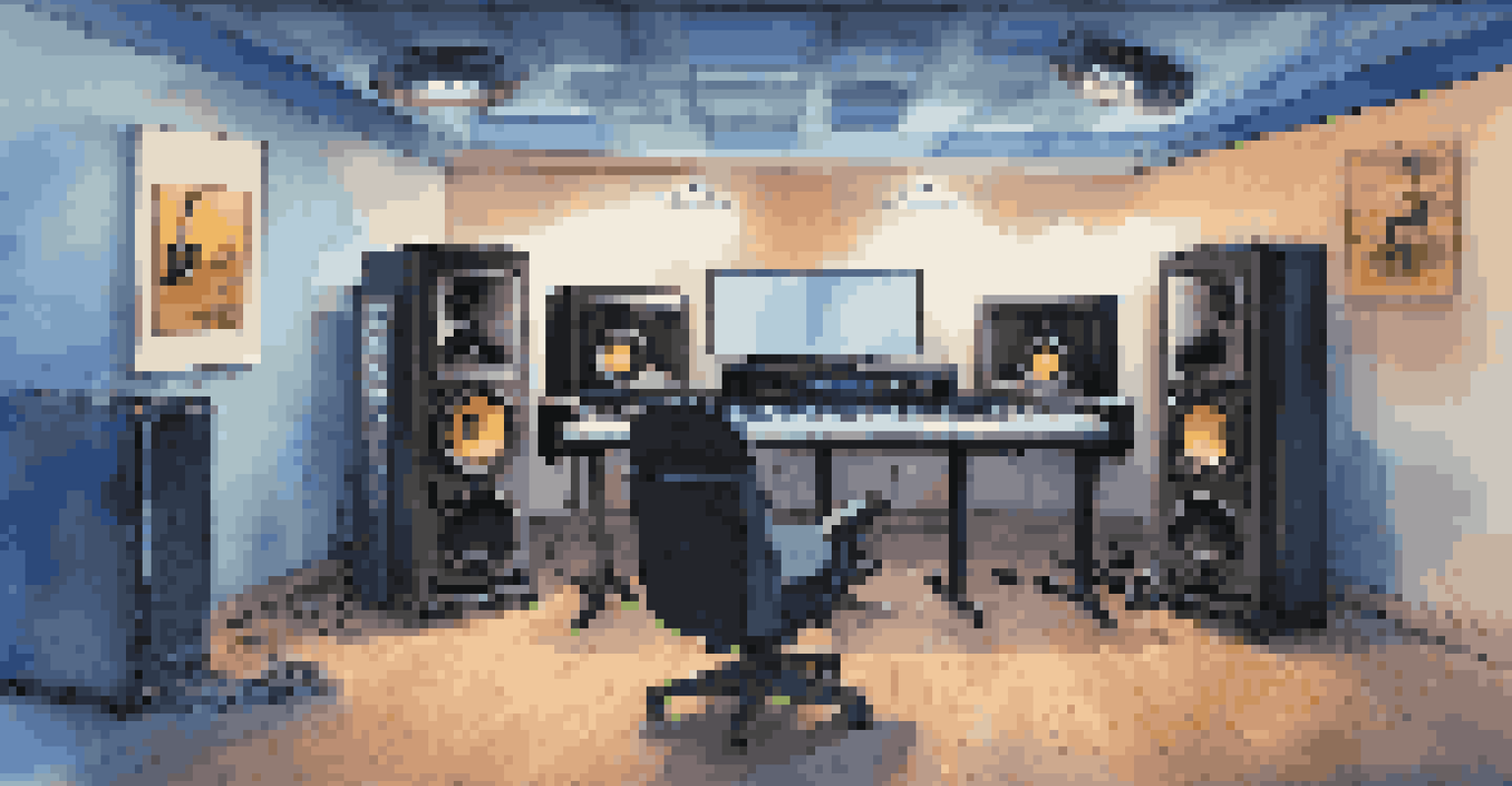How to Use Music Libraries for Licensing Needs

Understanding Music Licensing Basics
Music licensing is the process of obtaining permission to use music in your projects. It involves paying a fee to the rights holder, which can be the artist, record label, or publisher. This ensures that creators are compensated for their work, while you get to enhance your project with quality music.
Music is the shorthand of emotion.
There are different types of licenses, such as sync licenses for film and TV, and performance licenses for live events. Knowing the nuances can help you choose the right type for your needs. For example, using a song in a YouTube video typically requires a sync license.
Understanding these basics is crucial as it sets the foundation for navigating music libraries effectively. Not only will it save you time, but it can also prevent potential legal issues down the line.
Finding the Right Music Library for Your Needs
With countless music libraries available, finding the right one can feel overwhelming. Start by identifying your specific needs, such as the type of project and the genre of music you’re looking for. For instance, a documentary might require a different sound than a corporate promotional video.

Some popular music libraries include AudioJungle, Epidemic Sound, and PremiumBeat, each offering a unique selection of tracks. Exploring their collections can help you gauge what fits your project best. Additionally, many libraries provide search filters to refine your options based on mood, tempo, or instrumentation.
Basics of Music Licensing Explained
Understanding music licensing is essential for legally using music in your projects and avoiding potential legal pitfalls.
Take the time to compare different libraries to find the one that resonates with your vision. Not all libraries are created equal, and the right choice can significantly enhance the quality of your project.
Navigating Licensing Options in Music Libraries
Once you've chosen a music library, it's time to dive into the licensing options they offer. Many libraries feature a straightforward licensing model, which can include one-time fees or subscription plans. Understanding these options is essential to avoid any unexpected costs.
Without music, life would be a mistake.
For instance, a subscription model might offer unlimited access to tracks for a monthly fee, which can be beneficial if you plan to produce multiple projects. Conversely, a pay-per-track model might be more suitable for occasional users who need specific songs.
Read the licensing agreements carefully to ensure you comply with the terms. This diligence will help you use the music confidently, knowing you have the legal right to include it in your work.
Searching for Music: Tips and Tricks
Searching for the perfect track can be daunting, but there are effective strategies to simplify the process. Start by brainstorming keywords related to the mood or theme of your project. For example, if your video is upbeat and energetic, terms like 'happy' or 'fun' will guide your search.
Many music libraries also offer curated playlists or recommendations based on popular or trending tracks. These collections can help you discover music you might not have found otherwise. Utilizing these features can save you time and spark creativity.
Finding the Right Music Library
Identifying your project needs helps you choose the most suitable music library, enhancing the overall quality of your work.
Don't hesitate to listen to multiple tracks and experiment with different styles. Sometimes, the right piece of music can inspire new ideas for your project, making the search process a valuable part of your creative journey.
Evaluating Music Quality and Fit
Quality matters when it comes to selecting music for your projects. Listen closely to the production quality of each track; poorly produced music can detract from your project’s overall impact. High-quality recordings will elevate your content, making it more engaging and professional.
Moreover, consider how well the music fits with your visuals or narrative. A track that matches the pacing and tone of your project will resonate more with your audience. For instance, a suspenseful score can heighten tension in a dramatic scene, while an uplifting tune can enhance a feel-good moment.
Take the time to experiment with different tracks and pay attention to how they change the vibe of your project. Finding the perfect musical fit will not only enhance your work but also create a memorable experience for your audience.
Understanding the Costs Involved
Budgeting for music licensing is crucial, as costs can vary widely between libraries and tracks. Some libraries offer free options, while others might charge hundreds of dollars for exclusive rights. It’s important to factor these costs into your overall project budget to avoid surprises later on.
Consider the long-term value of the music you choose. Investing in high-quality tracks can pay off in terms of audience engagement and project success. On the flip side, opting for cheaper, lower-quality music might save you money upfront but could diminish your project’s impact.
Navigating Licensing Options
Familiarizing yourself with different licensing models ensures you can select the best option for your budget and project requirements.
Be transparent about your budget with potential libraries. Many offer tiered pricing or discounts for bulk purchases, which can provide more flexibility in managing your costs while achieving the quality you desire.
Final Steps: Downloading and Using Your Music Legally
After selecting the perfect track, the final step is to download and use it legally. Most music libraries provide a user-friendly interface for downloading your chosen tracks, often in various formats to suit your needs. Make sure to follow the library’s instructions carefully to avoid any issues.
Once downloaded, incorporate the music into your project, ensuring you adhere to the licensing terms. This might include giving credit to the artist or library, depending on the agreement. Keeping track of licenses can also help you stay organized for future projects.

Finally, remember to review your project with the music included to ensure everything flows seamlessly. This final check ensures that your chosen music enhances your work, resulting in a polished and professional final product.